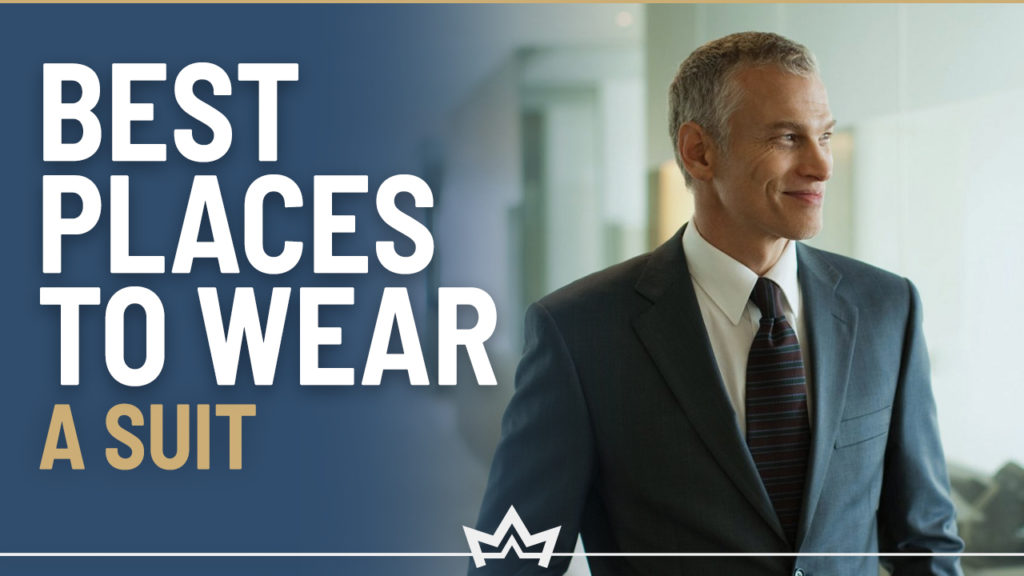A jacket to a suit is what mind to the body; essential with fascinating anatomy.
Learning about the suit jacket structure is never dull. Instead, it helps you stay informed about various suit styles and refine your overall fashion sense.
And yes, learning about your suit jacket is a leap toward a stylish gentleman – a level everyone strives to achieve.
Suit Jacket Body
Fine tailoring is an art, and the suit jacket construction is a perfect example.
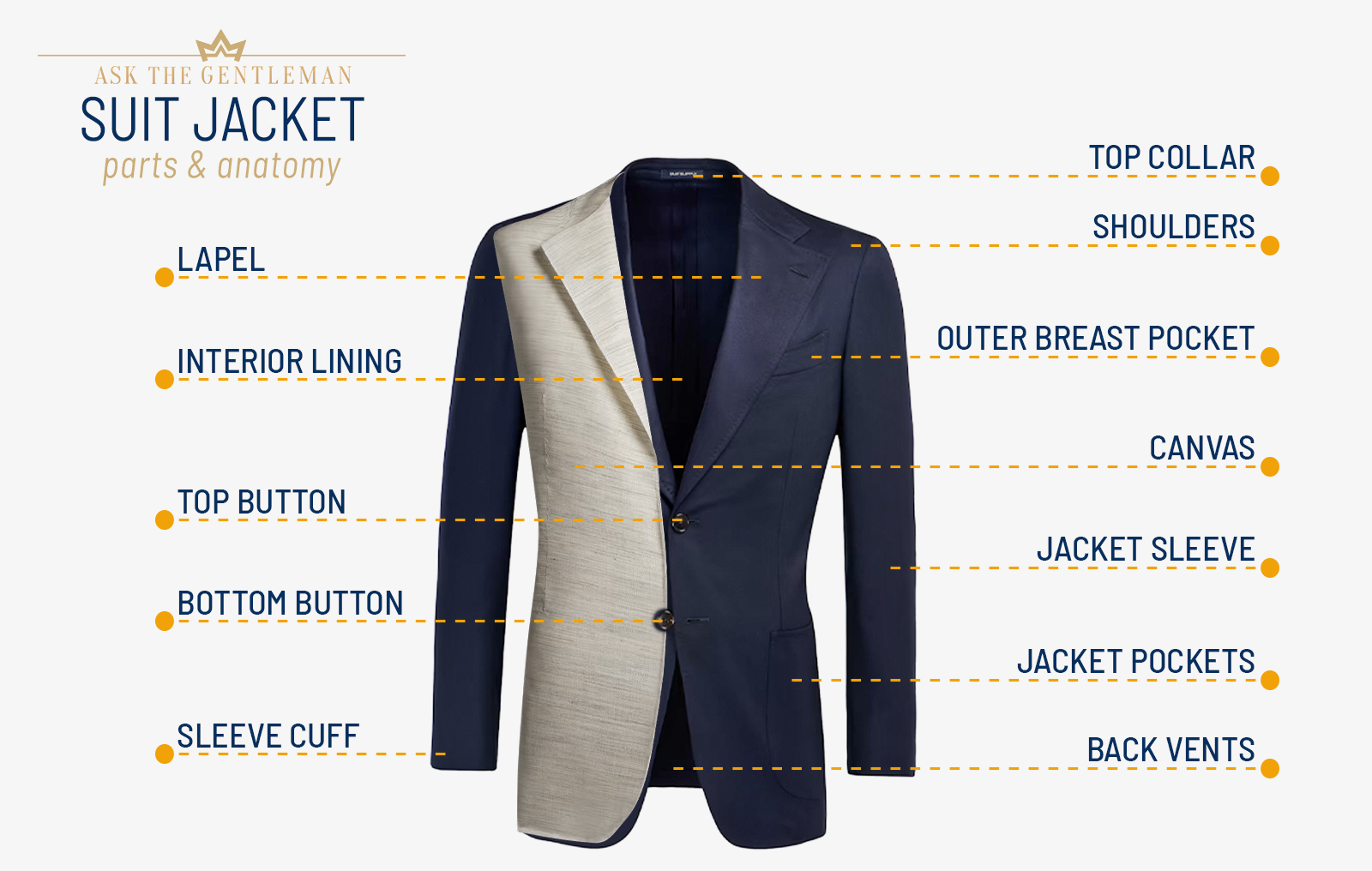
Remember that a suit jacket is made of different parts. The tailor then bastes these pieces to create the framework of your jacket.
This framework and the jacket’s overall silhouette around your torso define the suit jacket’s body.
And since the suit jacket has different pieces, each of these determines the jacket’s fit, drape, and cut.
Chest Darts
Chest darts are the vertical lines on the front panel of the suit jacket.
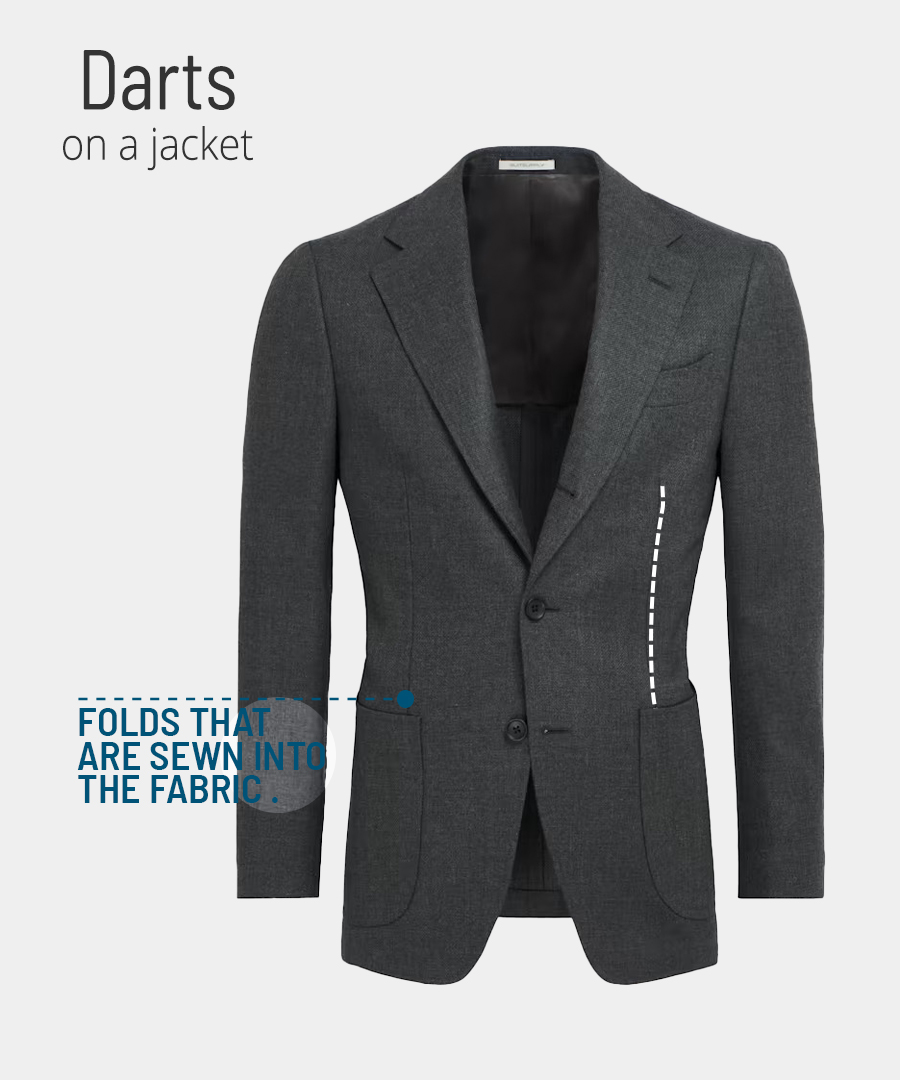
These darts might appear decorative but help in the jacket drape.
The idea is that the chest darts take in some fabric to create a tapering contour.
As a result, your suit jacket fits better in the torso and provides that modern finish.
Jacket Quarters
Jacket quarters refer to the two flaps that meet below the waist’s bottom button.
These are functional for the lower body and shoulders to balance out the proportions.
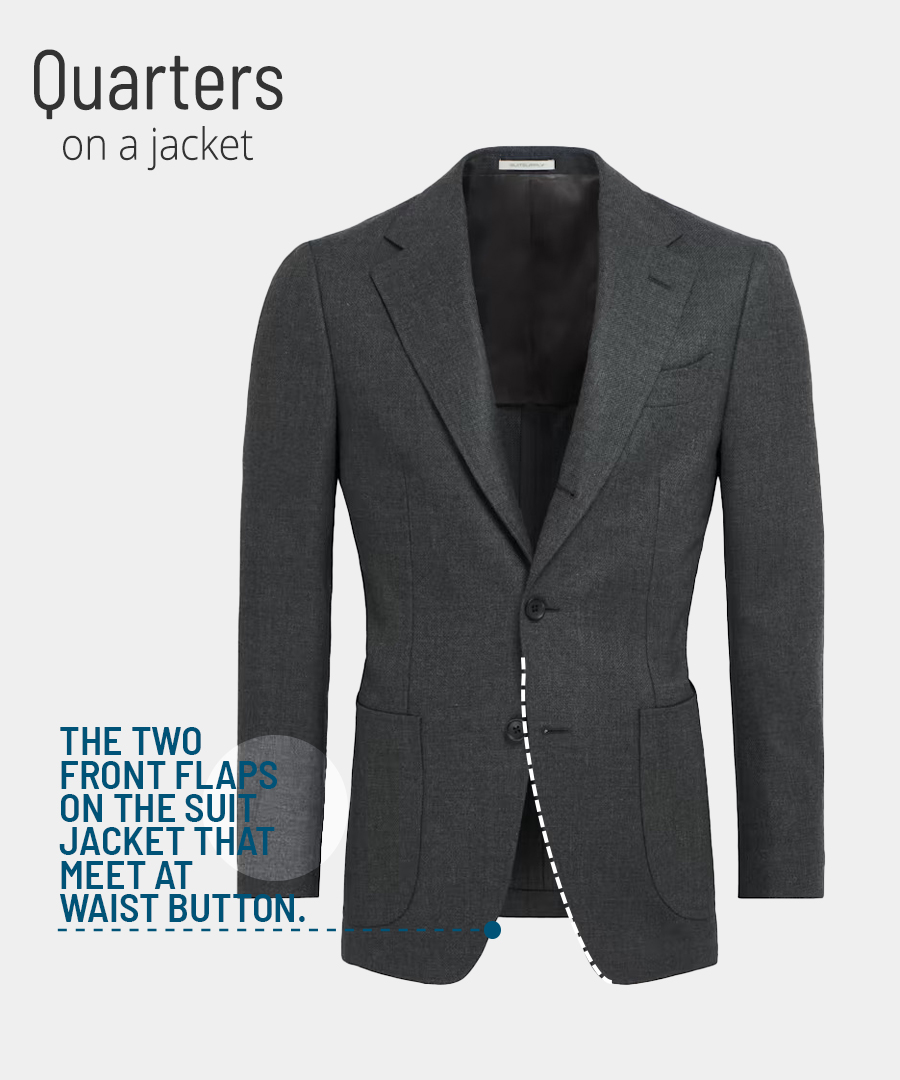
Jacket quarters can be opened or closed.
The closed jacket quarters are cut straight down from the bottom button, creating a Y-shaped silhouette. These feel snug at the waist and provide a widening effect on the shoulders.
In comparison, open jacket quarter flaps fan away from the waist button. This flyaway style enhances the lower body making it proportionate to the shoulders.
Deciding between the open or closed jacket quarters will depend on your body proportion and personal style.
Back Vents
Suit vents are both practical and stylish. These refer to the vertical cut at the lower back of the suit jacket.

Back vents are effective in providing a comfortable sitting experience. The vent opens up as you sit, maintaining your suit jacket drape.
A suit jacket can have single, double, or no vents. But the double vent suit jackets are the most prevalent style.
The two vertical slits prevent your jacket from rumbling as you sit.
Additionally, with hands in the pocket, a double vent maintains your back silhouette.

Next, with only one central slit at the back, single vents were traditionally an “American workplace” style.
These days, a single vent represents a casual and less attentive style. Also, it only flatters gentlemen with slightly big rears.
Lastly, a ventless suit jacket is made to achieve a sleek, trimmed silhouette. It’s the best vent style for tuxedos and dinner jackets.
Jacket Lapels
Lapels represent the folded fabric from the collar to the top button of the suit jacket. And these are the focal point of the suit jacket anatomy.

The reason is that lapels communicate your style and aesthetic more than anything else.
The lapels can be one of three types: notch, peak, and shawl lapel.
The notch lapel has a notch at the junction of the lapel and collar. These are the most versatile style and can work for everything from business suits to casual blazers.
In peak lapels, the lapel extends beyond the collar creating a peak. It’s a formal lapel style that makes a statement.
Double-breasted suits, tuxedos, and other formal suits feature peak lapels.

Shawl lapels have a single fabric fold with no collar or lapel differentiation. It’s a laid-back formal suit style common with tuxedos and dinner jackets.
The size of lapels also plays its part in the fashion connotation. Slim and skinny lapels showcase modern styling and emphasize your shoulders.
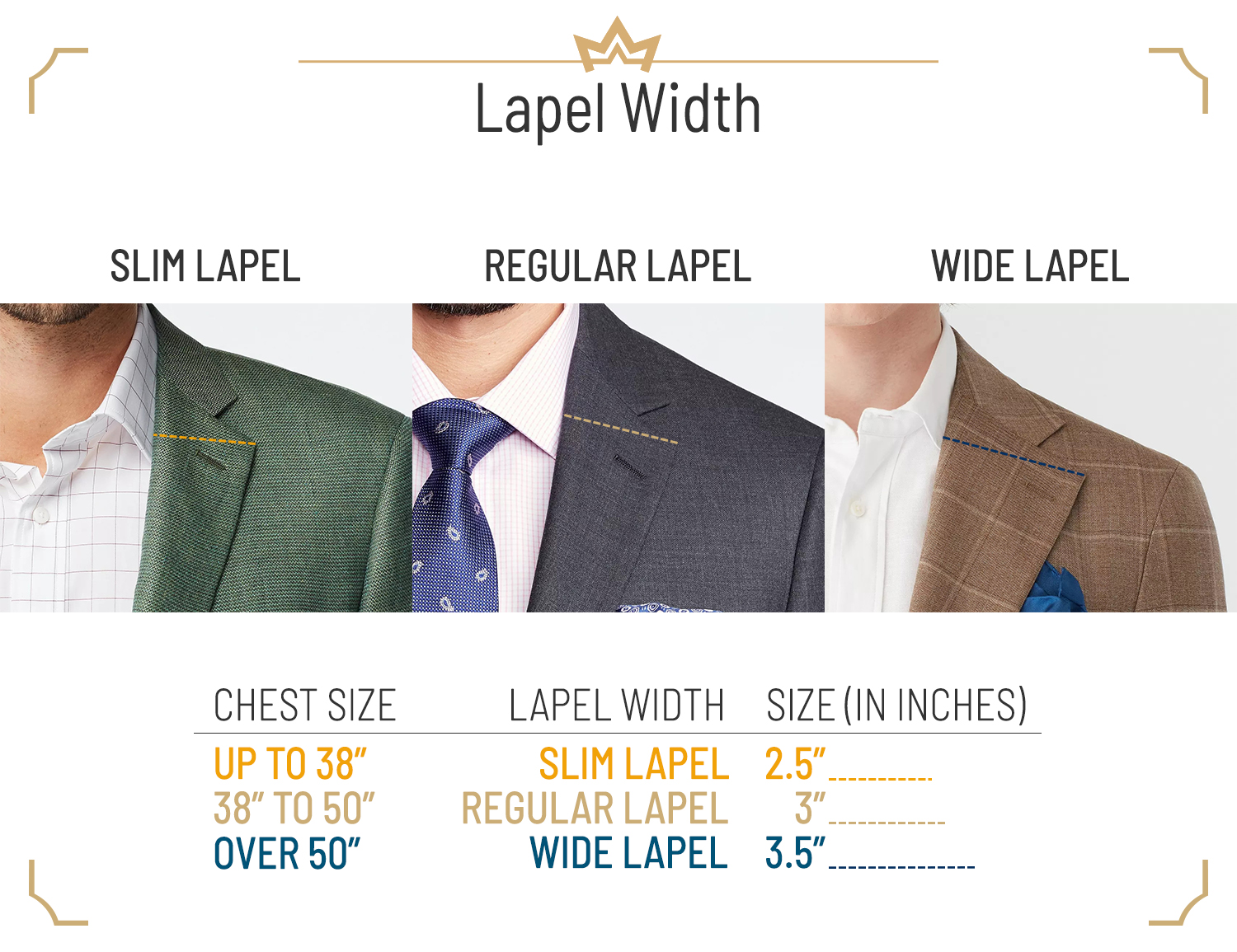
In comparison, the wide lapel is a conservative style that gets attention away from the shoulders.
The notch and peak lapel can also have a lapel hole. This hole was traditionally there to close the jacket all the way up.
But now, this lapel hole serves as an attachment site for the lapel button, pin, and boutonniere.
Suit Canvas Construction
One of the overlooked components of the suit jacket anatomy is the canvas. The canvas is the skeleton or the interfacing that shapes the suit jacket.
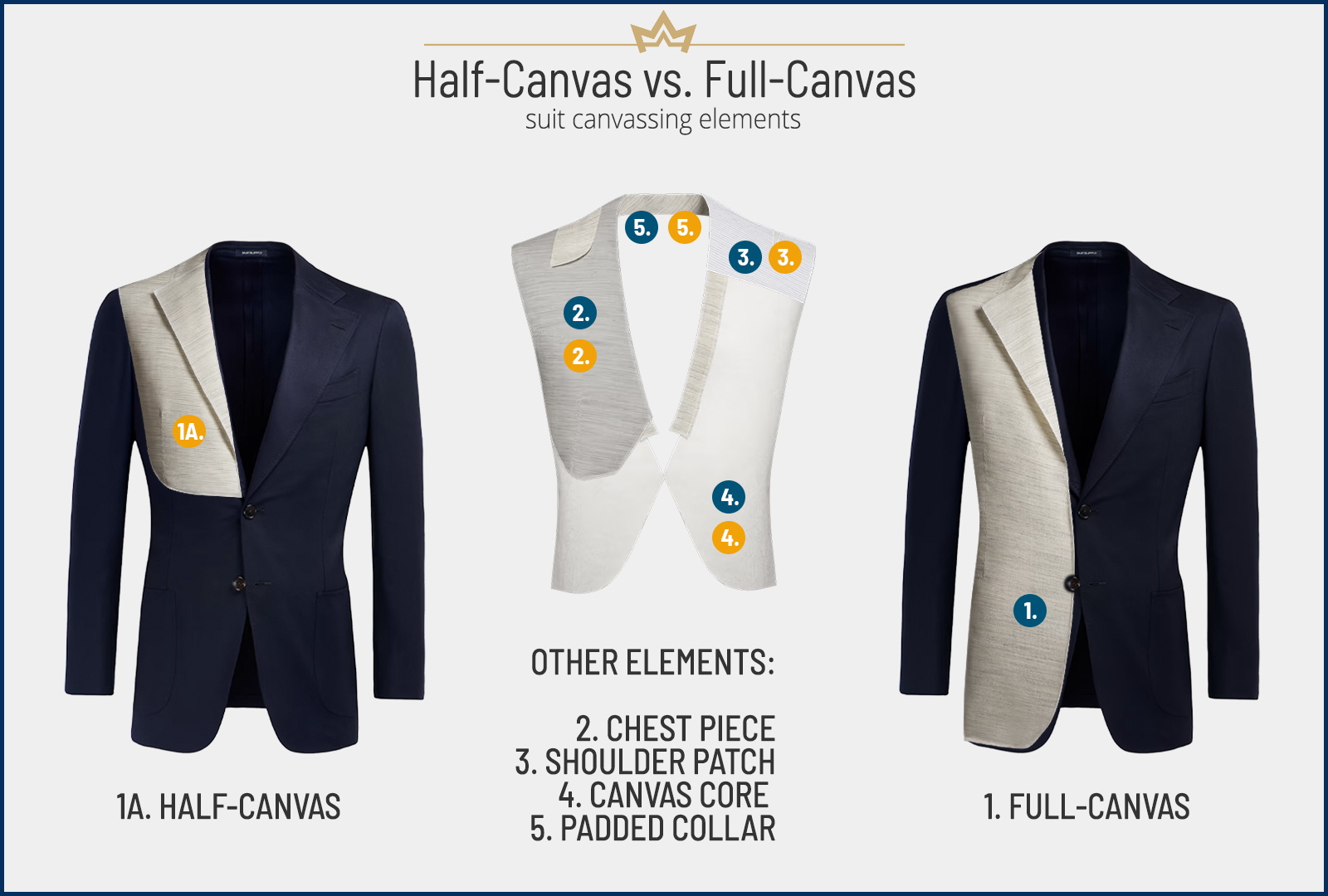
In simple words, the canvas is a layer between the suit jacket’s outer and inner lining. It’s made of horsehair or wool blended with cotton and other synthetic materials.
The suit canvas help drape the suit jacket. Over time, the canvas takes the shape of your body, and the suit fits even better.
The suit jacket can either be fully canvassed or half-canvas. In addition, it can have no canvas, meaning the jacket is fused.
A full-canvas suit jacket has interfacing on the entire front surface.
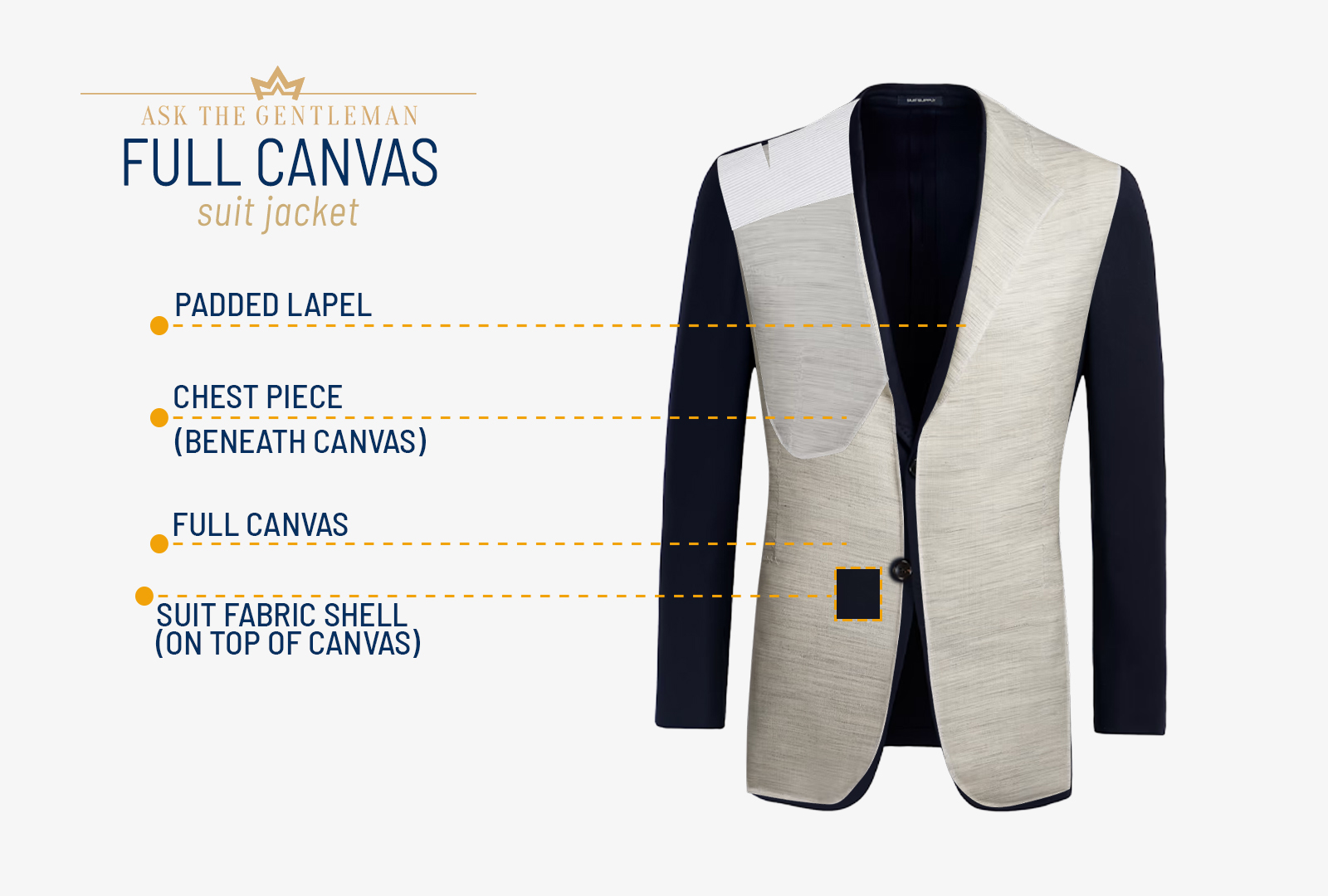
This gives a nice structure to the jacket and helps achieve that perfect silhouette.
Fully canvassing the jacket is a tailoring masterpiece; therefore can require time and is expensive.
The alternative is a half-canvas suit. You can enjoy the padded shoulders and smooth lapel rolls for less price.
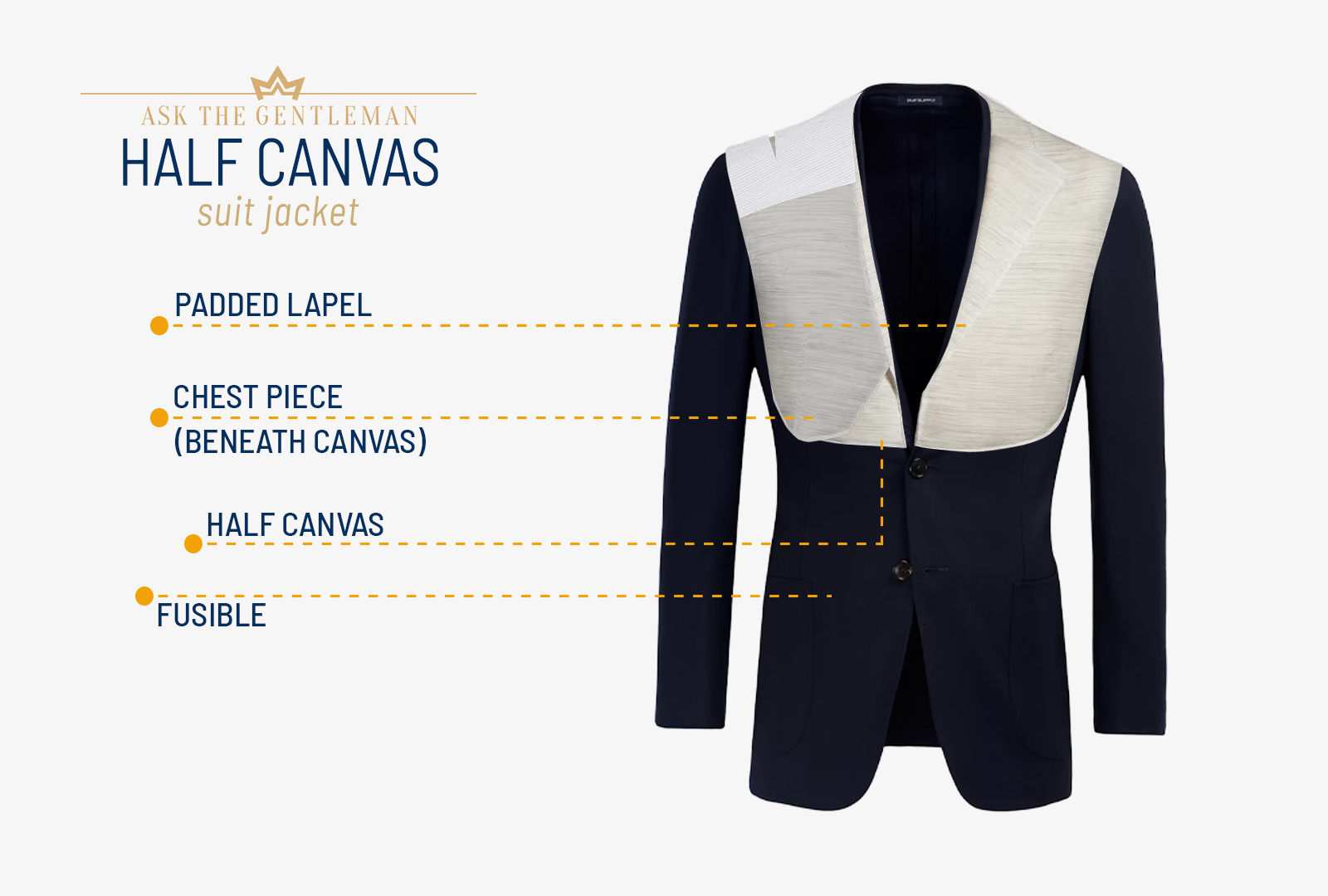
However, the finish isn’t as perfect as in a fully-canvassed suit.
A fused suit is the most affordable option of them all. As there is no canvas, you’ll have to compromise on fit, drape, and sophistication.
Suit Jacket Interior Lining
Interior lining contributes to the concealed suit jacket anatomy. And it would be visible opening the jacket while sitting or taking it off.
But the suit jacket’s inside lining is much more than the visibility. It adds weight and, thus, a better structure to the jacket.
Getting warmth and a proper shape are some additional benefits.
A jacket can be fully lined, half-lined, or unlined. Full-lining is the most popular option.
Bemberg, a smooth, silky material, usually comprises the jacket’s interior lining.
Gentlemen also like to play with colors and patterns for their suit jacket interior lining. The choice here is completely a personal preference.
Matching the lining color with the suit jacket is the most effortless option. In comparison, patterns like paisley and gingham check are statement-makers.
Armholes & Shoulder Construction
So much emphasis goes into perfecting the shoulders that there exist dizzying varieties in construction.
These can vary based on the light or heavy shoulder pads, structured or soft, and convex or concave shoulders.
The most regal is the roping shoulders, where the sleeve stays slightly higher than the shoulder, creating a formal style.
Another construction is the structured “English” shoulder style. This style focuses on heavy shoulder padding and large canvassing.
The alternative is the unstructured “Italian” shoulder. This shoulder’s drape matches the natural shoulder line.
A Neapolitan shoulder is similar to an unstructured shoulder, except it has puckering at the shoulder-sleeve junction.
The last one is the natural or “American” shoulder. Being inspired by Brooks Brothers, this construction features downward-sloping shoulders.
Getting the perfect fit should always be the priority regardless of your shoulder style.
Armholes don’t have much variation like shoulders. The goal should be to have an armhole as close to the body as possible.

The reason is that a high armhole with a large sleeve head provides the greatest range of motion.
Sleeves & Sleeve Cuffs
Your jacket sleeves have a powerful visual effect on the jacket’s fit and impact comfort.
Ideally, a half-to-quarter inch of your shirt cuff must be visible underneath the jacket sleeve.

Significant about the construction of the sleeves is the pitch of the sleeves.
It’s the attachment angle of the sleeve head to the jacket and its correlation with the person’s natural stance.
The sleeve pitch can make or break the sleeve fit, and it’s essential to get this right.
Next are the sleeve buttons. These define formality and communicate attentive styling.
Four jacket buttons are the standard and the most formal style. In contrast, a single-sleeve button is the most casual.

The sleeve buttons often have some space between them.
However, a trendy style is to have kissing or waterfall buttons. These closely adherent sleeve buttons showcase meticulous tailoring.
Sleeves can also feature working sleeve button cuffs.
Traditionally, these were the functional surgeon’s cuffs. But nowadays, working buttons is a flaunt of fine tailoring.
Top Collar
The suit jacket’s fabric around your neck is the collar of the jacket.

The lapels might appear to be a continuation of this collar, but both are separate. In fact, the collar joins the lapels at a point called a gorge.
In bespoke tailoring, the gorge is important for the balance of your suit jacket.
For example, a low button stance and high gorge can portray a long torso in an otherwise short individual.
The collar fit, in general, is also critical for a visually powerful look.

The suit jacket collar should lie flat with no gap between the shirt and the jacket.
Additionally, the bunching of fabric at the back of the collar would indicate a bad fit.
Pockets
Pockets define the formality and elegance of the suit jacket.
The number of pockets and their style all contribute to the anatomy of a suit jacket.
A typical suit jacket has three pockets; two side pockets and a breast pocket.
The suit jacket can have one of the three pocket styles: patch, flap, and piped (jetted).
Patch pockets are less common and represent a casual or sporty styling.
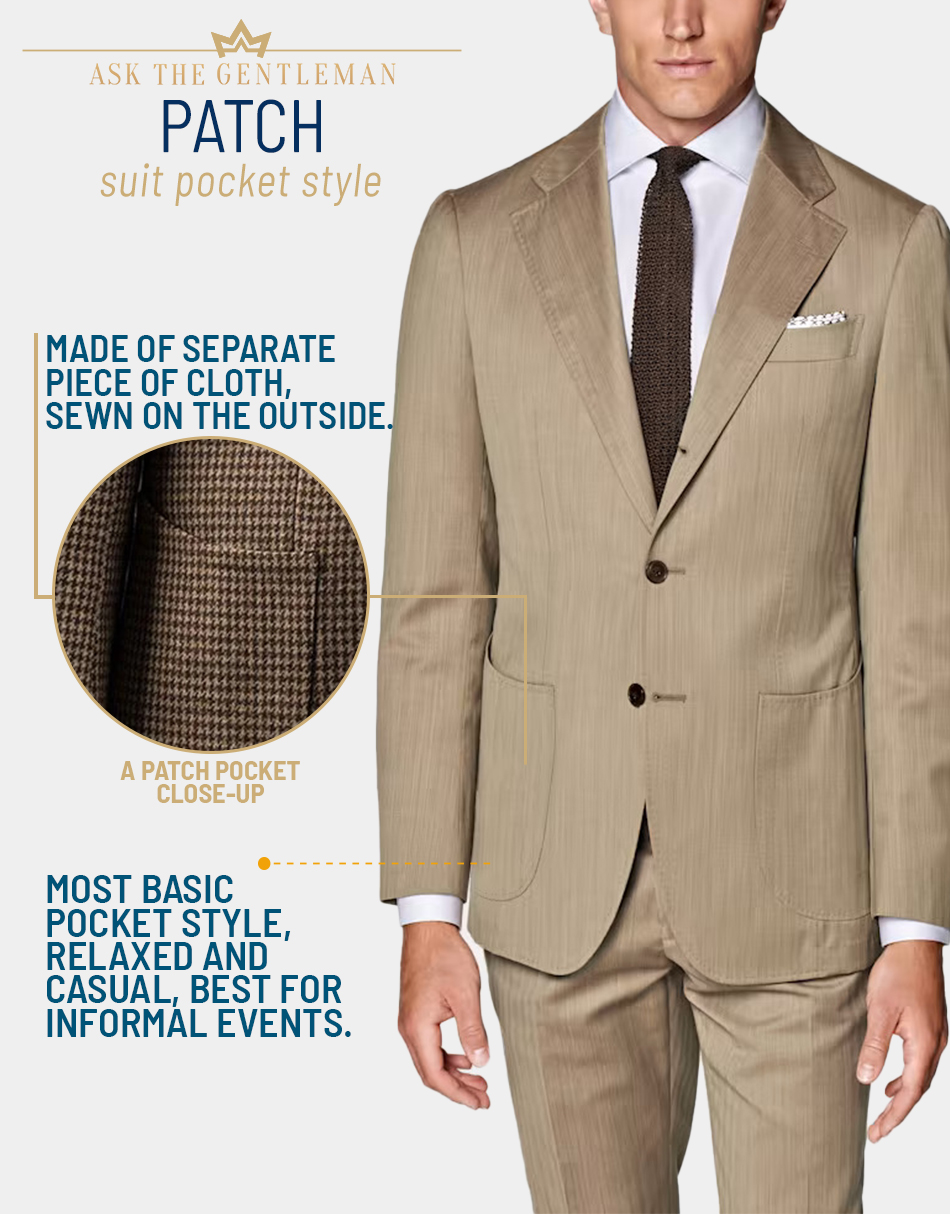
In comparison, flat pockets are a versatile style that works for all occasions. You can tuck them in for a refined look or keep them outside for a laid-back style.
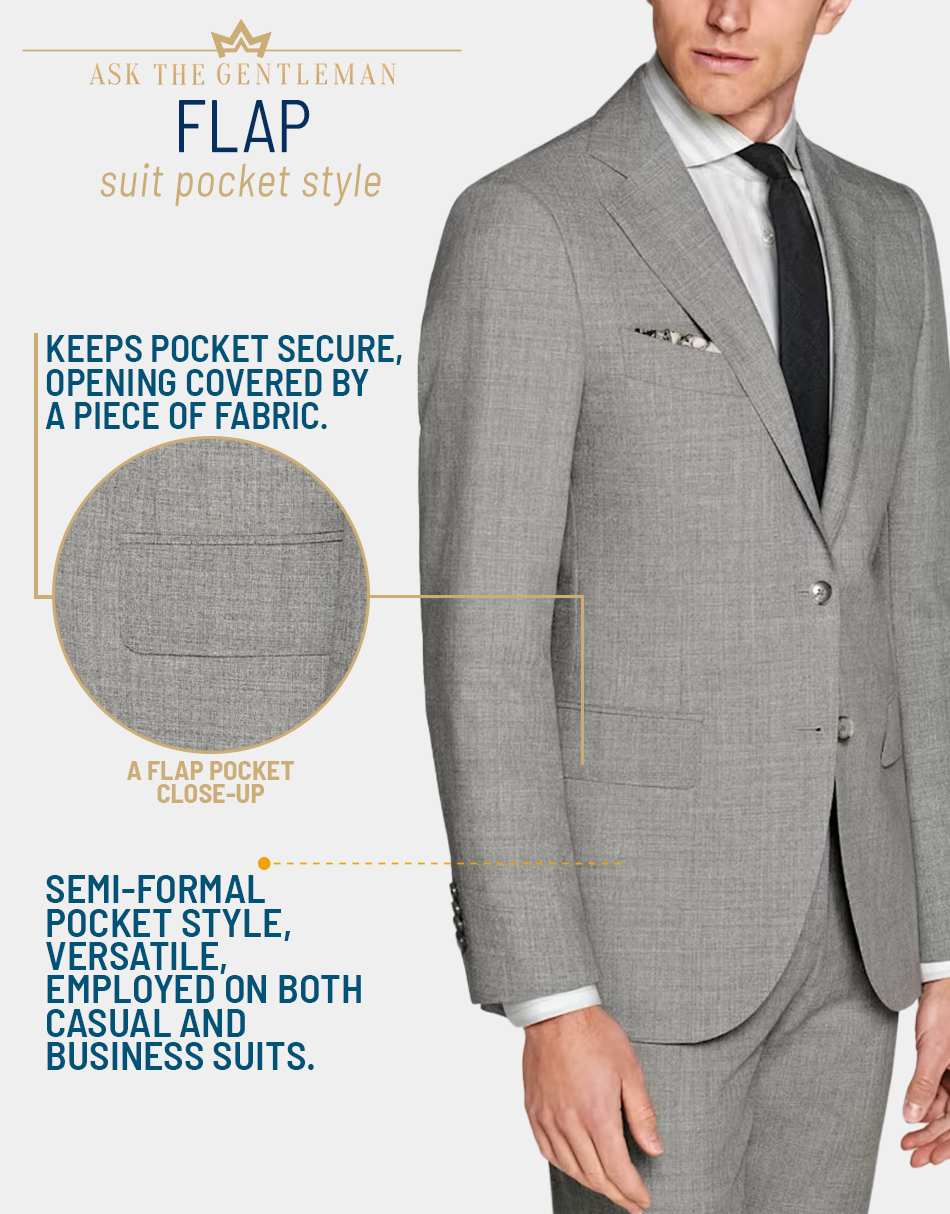
Piped (jetted) pockets create a slim slit and define elegant dressing.
Formal pieces like tuxedos and dinner jackets feature jetted pockets.

Some suit jackets have an additional ticket pocket, usually above the main right pocket. This pocket used to be functional, but now it’s more of a style choice.
Lastly, the breast pocket of the jacket has a welt that can be straight or curved.
This breast pocket looks balanced when the top part of the pocket is near the armpit.
Buttons
The button contributes to the suit jacket construction to an extensive degree.
In fact, the buttons define the overall style of the jacket, whether it’s single or double-breasted.
A single-breasted suit usually has two buttons. Other less common variations include one and three buttons.
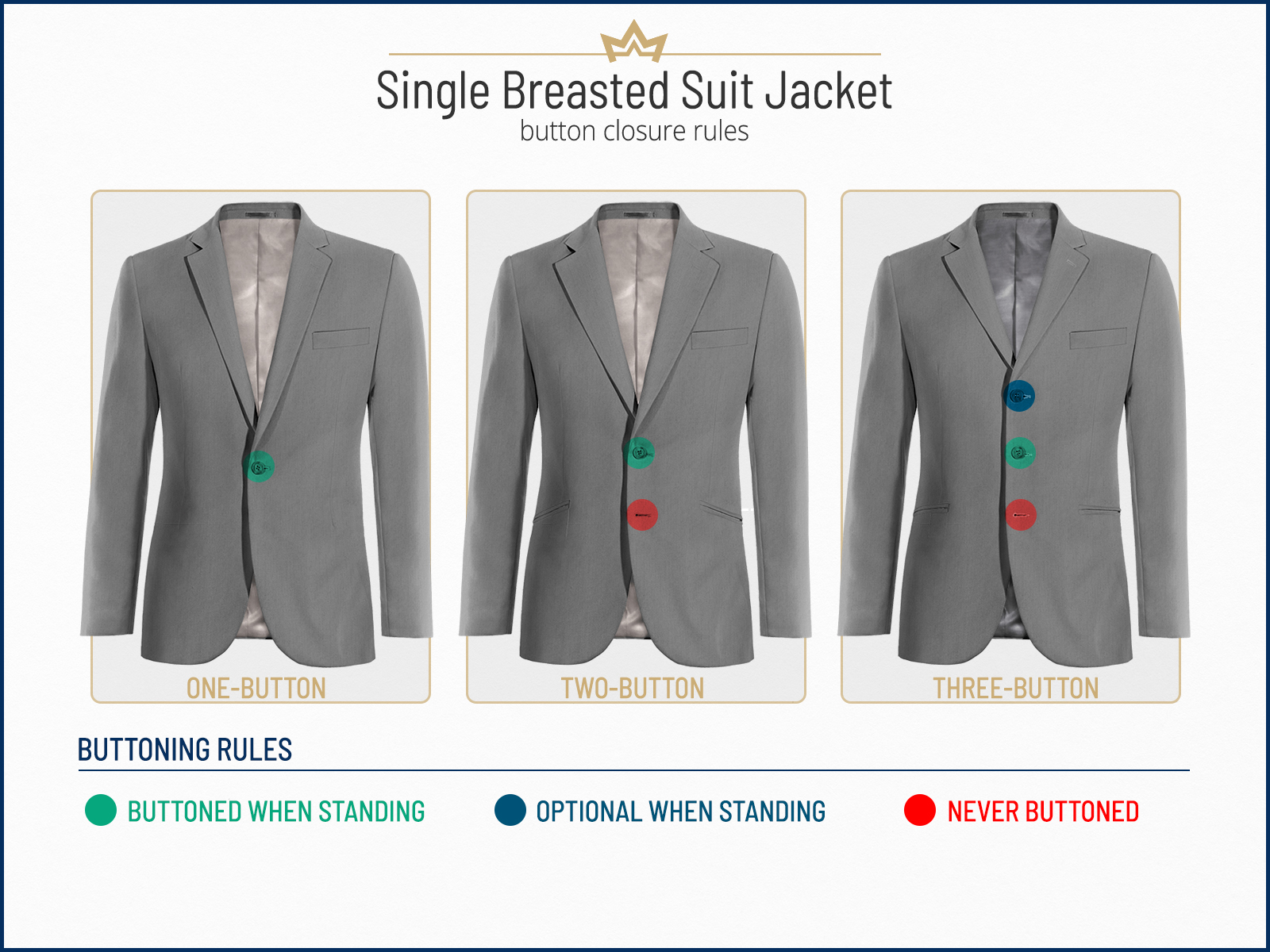
Also, remember that in a two and three-button single-breasted jacket, you never fasten the bottom button.
Double-breasted jackets have diversity. The buttons on these jackets are defined as 4×1, 4×2, 6×1, 6×2, 6×3, and rarely as 8×3.
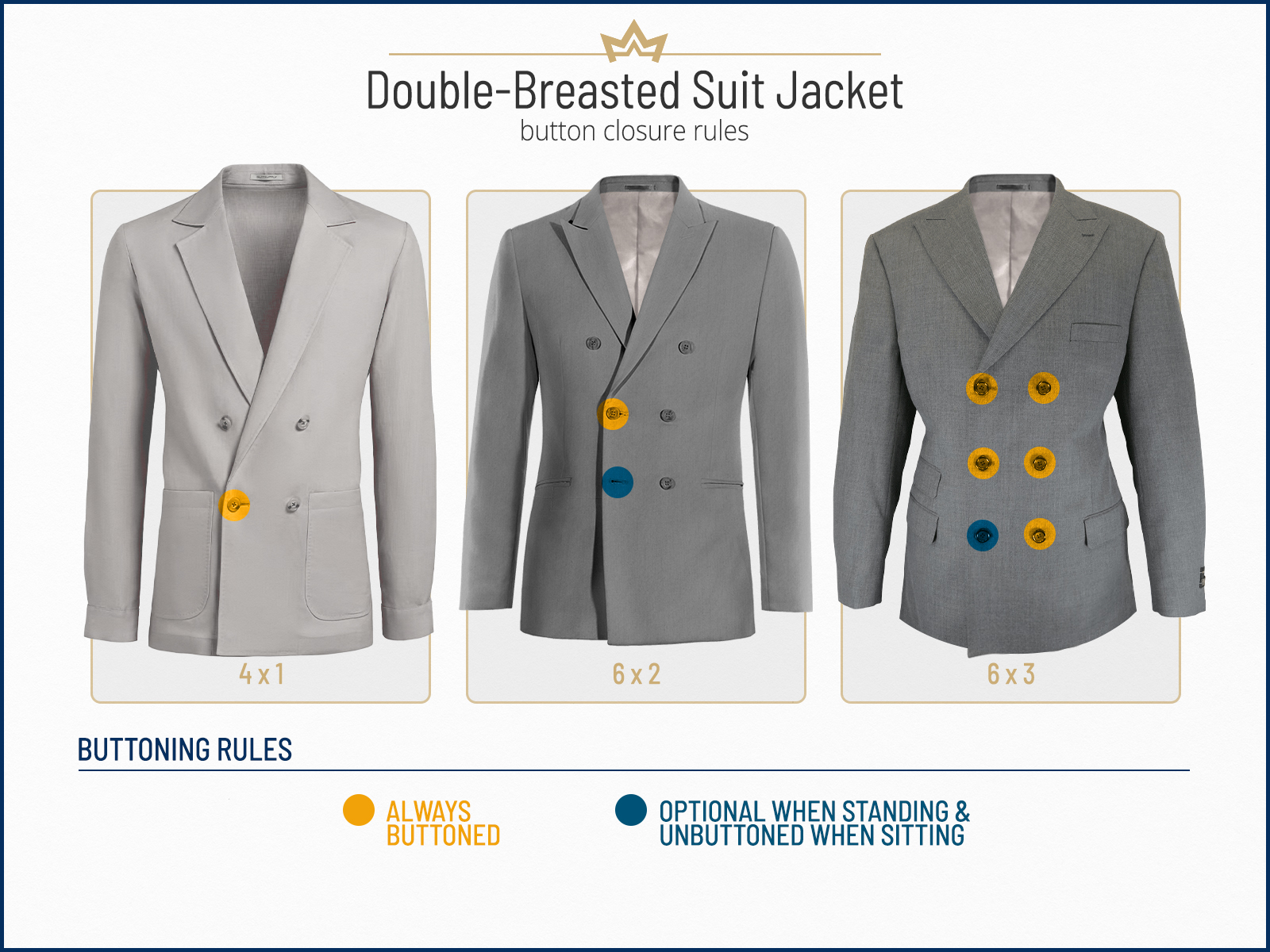
Here the first number means the total number of jacket buttons, while the second is the functional buttons.
And you should always fasten all the functional buttons of a double-breasted jacket.


